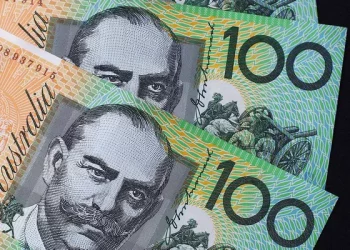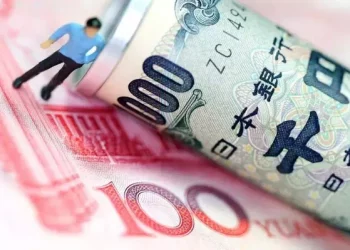In today’s ever-evolving financial climate, understanding the intricate relationship between interest rates and the value of the United States Dollar (USD) is paramount. A key question on the minds of investors, economists, and financial analysts is, What happens to the USD if interest rates rise? This article delves deep into this crucial subject, dissecting the multifaceted dynamics at play and providing valuable insights for anyone looking to make informed decisions in the world of finance.
Interest Rates and the USD: A Complex Interplay
Interest rates are the backbone of any economy, acting as a fundamental driver of financial activity. When they rise, they create a ripple effect that reverberates across various sectors. Let’s explore how this intricate interplay unfolds:
1. The Appreciation of the USD
When interest rates rise, the USD tends to strengthen. This is a phenomenon rooted in the concept of yield differentials. As the Federal Reserve increases rates, the returns on USD-denominated assets become more attractive to investors, drawing in foreign capital seeking higher yields.
2. The Impact on Exports and Imports
Higher interest rates can lead to a stronger USD, which can, in turn, hinder export-driven economies. As the USD appreciates, American goods become more expensive for foreign buyers, potentially reducing demand for U.S. exports. Conversely, a stronger dollar can make imports more affordable for U.S. consumers, increasing the trade deficit.
3. The Burden on Borrowers
Rising interest rates can pose challenges for borrowers. Whether it’s individuals with mortgages or businesses with loans, higher interest rates mean increased borrowing costs. This can lead to reduced consumer spending and business investment, potentially impacting economic growth.
4. The Stock Market Conundrum
The relationship between interest rates and the stock market is intricate. Historically, rising interest rates have often led to stock market volatility. As borrowing costs increase, companies may face higher expenses, which can affect their profitability and, consequently, stock prices.
5. International Capital Flows
Rising U.S. interest rates can attract international capital. When the U.S. offers higher returns, foreign investors are more inclined to invest in U.S. assets, such as bonds and equities. This inflow of capital can further strengthen the USD.
6. Inflationary Pressures
Higher interest rates can serve as a tool to combat inflation. The Federal Reserve may increase rates to curb excessive inflation. While this can be effective in controlling rising prices, it can also impact economic growth and the value of the USD.
Navigating the USD in a Rising Interest Rate Environment
With these key dynamics in mind, let’s explore some strategies for navigating the USD’s journey when interest rates are on the upswing:
1. Diversify Your Investment Portfolio
In a rising interest rate environment, diversification is crucial. Consider allocating your investments across a mix of assets, including stocks, bonds, and commodities. Diversification can help mitigate risks associated with currency fluctuations.
2. Keep an Eye on Economic Indicators
Monitor economic indicators such as GDP growth, employment data, and inflation rates. These indicators can provide valuable insights into the Federal Reserve’s future interest rate decisions, helping you make informed investment choices.
3. Hedge Your Currency Exposure
For international investors or businesses with global operations, hedging currency exposure can be a prudent strategy. This involves using financial instruments like forward contracts to protect against adverse currency movements.
4. Stay Informed About Central Bank Policies
Central banks, especially the Federal Reserve, play a pivotal role in shaping interest rates. Stay abreast of their policy statements and decisions, as they can have a direct impact on the USD’s value.
5. Evaluate Your Debt Obligations
If you have outstanding loans or credit card debt, rising interest rates may increase your borrowing costs. Consider refinancing or consolidating debt to lock in lower rates before they rise further.
In Conclusion
The relationship between rising interest rates and the USD is intricate and multifaceted, with implications that stretch far beyond the currency markets. As interest rates climb, investors, businesses, and individuals must adapt and make informed decisions to safeguard their financial interests. By diversifying investments, staying informed about economic indicators, and considering strategies like currency hedging, you can navigate the complex landscape of a rising interest rate environment effectively. Ultimately, success in the world of finance hinges on understanding and capitalizing on these interwoven dynamics.
Related Topics:
The USD to GBP Exchange Rate: What You Need to Know
The Value of 500 USD in CAD: A Comprehensive Guide
How Much is $1 USD in Mexican Pesos?

























